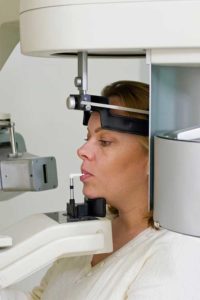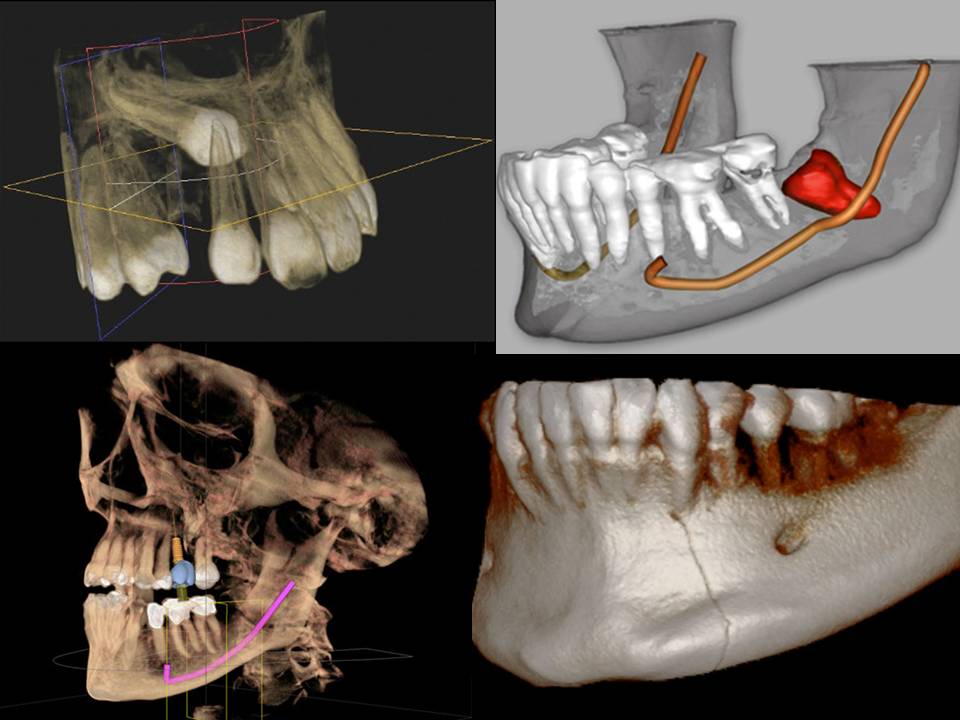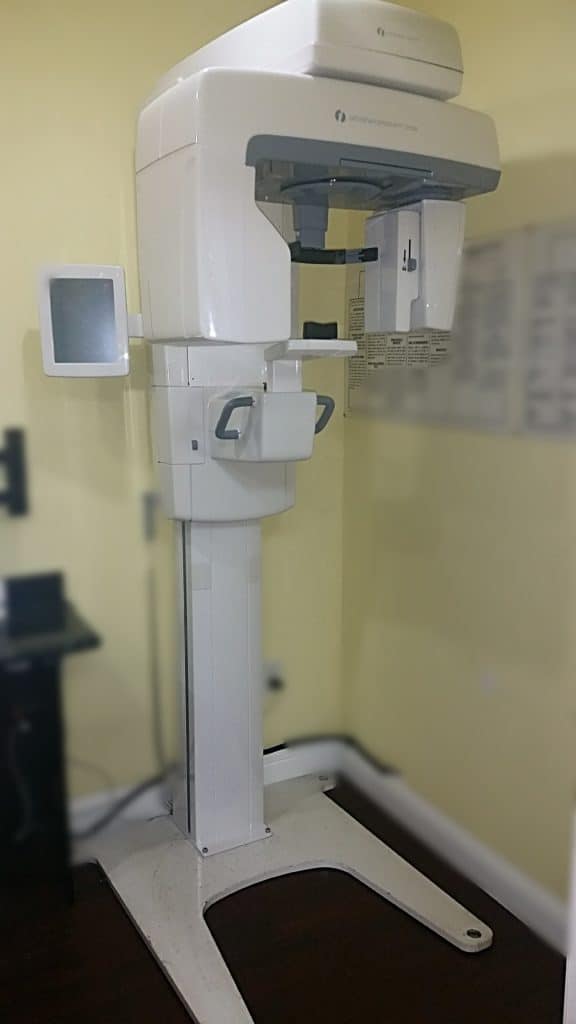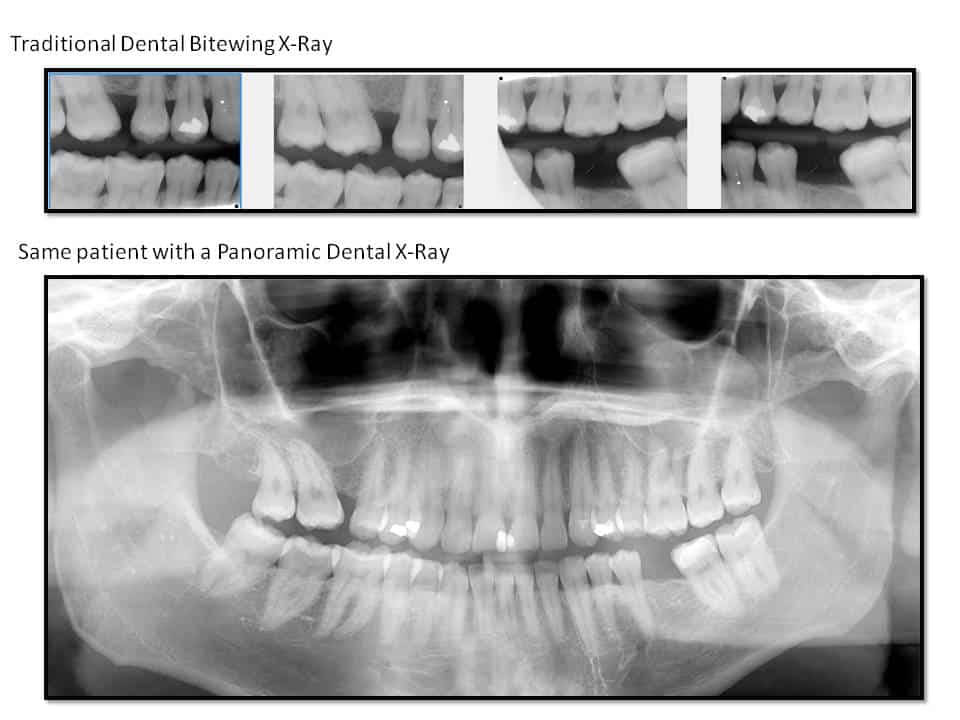
What is a CBCT Scan?
A dental Cone Beam Computed Tomography (CBCT) is a unique type of x-ray. It is taken when common dental x-rays are not sufficient to see not only bone structure but also soft tissue and nerves. Your dentist can use this scan to produce three-dimensional images of tooth, bone, soft tissues, and nerves for more accurate treatment planning.
Is a dental CBCT the same as the CT scan I get at the hospital?
No. The dental CBCT is different. However, it can produce very similar images of the cranium and facial bones as a CT scan. The cone beam CT (CBCT) is an x-ray in the shape of a cone and it produces a large number of “images” or “views” as it moves around the face. The CBCT was developed so that similar high-quality images could be created with a machine that could actually fit inside the typical dental office. The result is a smaller machine with lower radiation exposure than a conventional CT scan.
While a CBCT will provide an incredibly detail view of the jaw, it does not provide the full diagnostic information available with a conventional CT scan in terms of evaluation muscles, lymph nodes, and glands.

Different types of 3-D imaging captured with a dental cone beam CT.
What is a CBCT used for?
A dental CBCT can be used for complex dental cases and orthodontic issues:
- Oral surgery planning for impacted teeth
- Diagnosing TMJ
- For accurate placement of dental implants
- Evaluation of jaw, sinuses, nerve canals, and nasal cavity
- Evaluation tumors of the jaw and detection of
- Determining reconstructive surgery needs
- Identify pain not detected by the human eye
- Determine bone structure and tooth orientation
How does the procedure work?
An x-ray will be taken as the machine arm moves panoramically at 360° around the patient’s head. With the x-ray on one side and a detector on the other, between 150 and 200 two-dimensional images will be taken. Patients may either be seated or standing in order for the technician to get the proper imaging. The images are then put together to construct a 3-Dimensional view that provide valuable information to your dentist or surgeon.

Benefits vs. Risks
Benefits
- The focused x-ray beam reduces scatter radiation, resulting in better image quality.
- A single scan produces a wide variety of views and angles that can be manipulated to provide a more complete evaluation.
- Cone beam CT scans provide more information that conventional dental x-ray, allowing for more precise treatment planning.
- CT scanning is painless, noninvasive and accurate.
- A major advantage of CT is its ability to image bone and soft tissue at the same time.
- No radiation remains in a patient’s body after a CT examination.
- X-rays used in CT scans should have no immediate side effects.
Risks
- There is always a slight chance of cancer from excessive exposure to radiation. However, the benefit of an accurate diagnosis far outweighs the risk.
- CT scanning is, in general, not recommended for pregnant women unless medically necessary because of potential risk to the baby in the womb.
- Because children are more sensitive to radiation, they should have a CT exam only if it is essential for making a diagnosis and should not have repeated CT exams unless absolutely necessary. CT scans in children should always be done with low-dose technique.
Can cavities be found with a CBCT?
A CBCT scan would not be recommended for a dentist to use to find cavities in teeth. While the imaging is incredibly detailed, the imaging is not able to detect cavities. If a dentist recommends for you to take additional x-rays due to a caries risk it would not be uncommon.
What is the difference between a CBCT & and a Panoramic X-ray?
A panoramic x-ray is a two-dimensional image of your jaw that is taken to identify facial nerves, bone structure, and tooth orientation. It is mainly used for common oral surgery procedures and for the planning of orthodontic cases.
A CBCT is used when the doctor needs to know how much bone a patient has, the density of the bone, and for a 3-D representation of the jaw. It is mainly used for complex dental cases.

How much does a CBCT procedure cost?
A CBCT is absolutely the standard of care for any dentist who is placing dental implants and therefore the dental procedure cannot be done without a CBCT scan. The cost can vary between $250 and $600 and that depends on where the scan is done, the quality of the scan, and the amount of detailed needed. It is typically not covered by dental or medical insurance.
